He’s played an American president, a wheelchair-bound poet and Leonardo DiCaprio’s worst nightmare. Now, after eight years of retirement, Daniel Day-Lewis is back, portraying a tortured recluse in Anemone, a taut psychological drama directed by his 27-year-old son, Ronan. The reviews have been so-so – and yet the excitement over Day-Lewis’s return is striking and arguably unprecedented in Hollywood. Forget Oasis or Radiohead. For cinephiles, this is the 2025 entertainment industry comeback to savour.
But Day-Lewis has always been different – a rock star of the big screen. Across his 40-year career, he single-handedly made method acting cool – where every other actor in the history of cinema has encouraged us to think of it as the worst idea ever. And that is just the beginning of his talents. Nobody does facial hair better and he has elevated hat-wearing to an art form. The three-time Oscar winner can be suave, scary, funny and emotionally repressed – all at the same time, if required.
To mark the release of Anemone, here are his nine most essential roles. Given the span of his life on screen, there are inevitably some omissions – his hilarious turn as a lovestruck toff in the 1985 Merchant-Ivory adaptation of EM Forster’s A Room With a View, for instance. Hold on to your period headgear of choice as we count down the best of Daniel Day-Lewis.
9. Lincoln (2012)
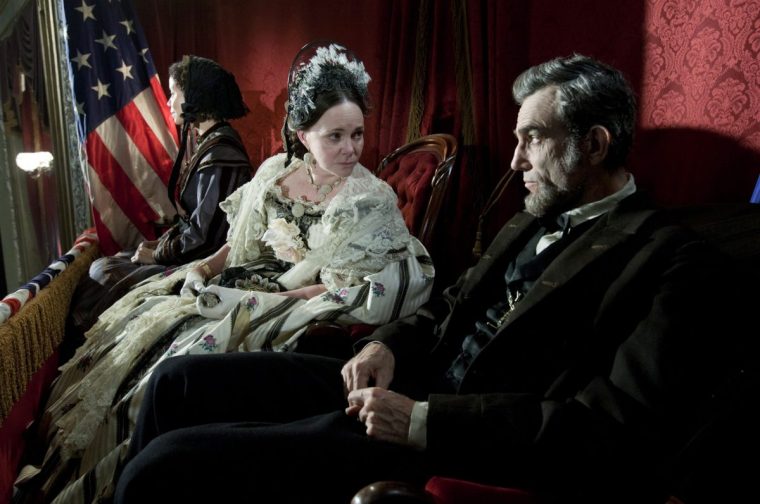
When playing a figure of the historical magnitude of Abraham Lincoln, many actors would struggle to locate the man behind the myth. But Day-Lewis got so deep under the skin of America’s most iconic president that even friends of long acquaintance struggled to recognise him as anything other than Honest Abe brought back to life. Day-Lewis deservedly won his third Academy Award for the role – though there were occasional grumblings that his commitment to method acting went too far. For instance, even when the cameras weren’t rolling, the rest of the cast had to pretend they were still in the 19th century – there could be no references to telephones or cars, much less Twitter or Instagram. However absurd, the approach worked. Lewis did the impossible by breathing vitality into a figure previously familiar only from dusty history books.
8. In the Name of the Father (1993)

The rage and the poetry that burned within the soul of wrongly imprisoned Gerry Conlon were brought to life by Day-Lewis in a performance that was both a testament to Conlon’s bravery and an indictment of British justice. Released in 1993 when the fires of the Troubles were still blazing, In the Name of the Father chronicled Conlon’s fight for freedom after he and his father, Giuseppe (Pete Postlethwaite), were wrongly convicted of the 1974 Guildford Pub bombings, in which five people were killed. Today, much of the film seems straightforward and rather workmanlike – it isn’t all that far off a TV movie. However, Day-Lewis’s searing performance elevated it into something raw and angry. It resonates to this day: when Belfast/Derry hip-hop trio Kneecap took to the stage at Glastonbury over the summer, rapper Liam ÓgÓ hAnnaidh referenced the prosecution he was facing after displaying a flag in support of Hezbollah by declaring, “I’m an innocent man” – the line so pointedly delivered by Day-Lewis at the end of In the Name of the Father.
7. My Beautiful Laundrette (1985)
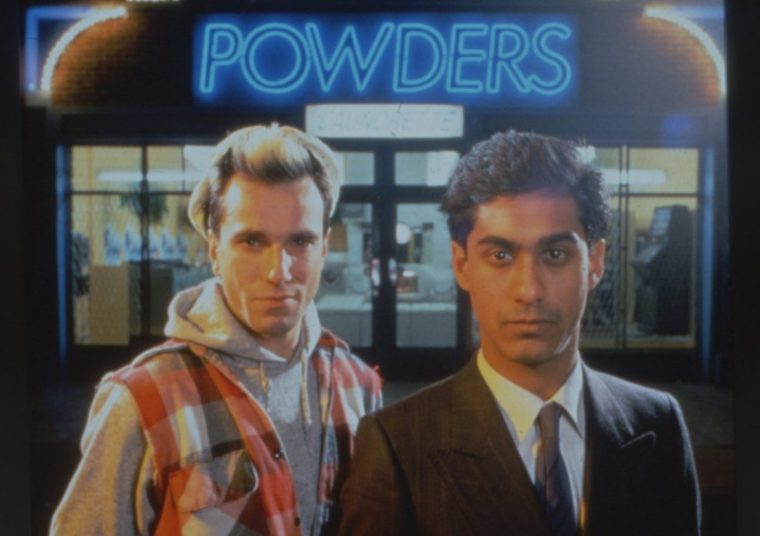
The young Day-Lewis worried that his relatively privileged upbringing – his expensive private education included a stint at £50,000-a-year Bedales – would work against him when he pursued the role of the gay working-class man drawn into far-right politics in Stephen Frears’ gritty inter-racial romance adapted from a script by Hanif Kureishi and set against the backdrop of racial tensions in Thatcher’s Britain. He went all out to bag the part, writing a letter to Frears in which he insisted he would be perfect as bad boy Johnny Burfoot. “I know you think I come from a public-school background but I’ve got very nasty friends.” Frears was won over and Day-Lewis delivered a star-making turn that combined the ferocity that would become his trademark with a vulnerability that made you believe a racist hooligan could have a heart of gold.
6. Gangs of New York (2002)
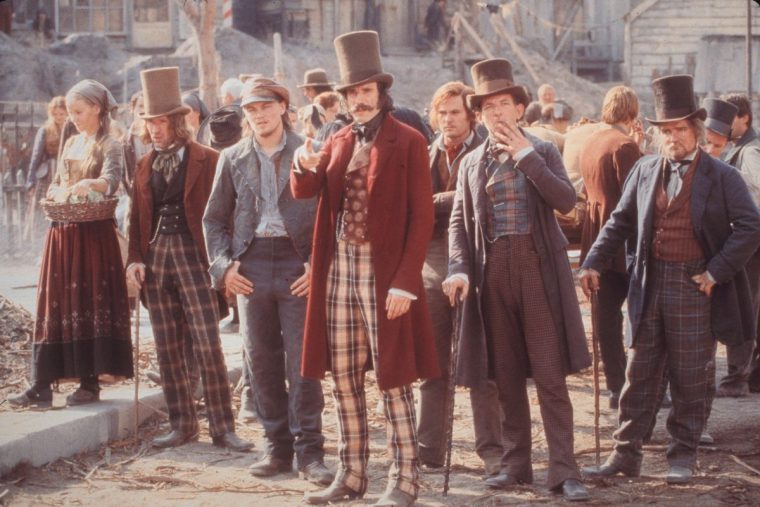
Leonardo DiCaprio personally pleaded with Day-Lewis to play walrus-moustached villain William Cutting – aka Bill the Butcher – in 19th century epic Gangs of New York. Did he or director Martin Scorsese have any inkling of what they unleashed? Like a jet engine striking up in an orchestra pit, Day-Lewis’s turn as a racist agitator was so overwhelming that everything else in the film – the sprawling sets, the fabulous hats, Cameron Diaz’s atrocious Irish accent – melted into irrelevance. A budget of millions, a cast of a thousands – all of it was inconsequential in the face of Day-Lewis’s towering inferno of a performance.
5. The Age of Innocence (1993)

From the start of Day-Lewis’s career, the sheer intensity of his acting consistently threatened to burn a hole in the screen. But could he play a character whose defining quality was a simmering restraint? He did just that as repressed New York dandy Newland Archer, who conceals his forbidden love for Michelle Pfeiffer’s Countess Olenska behind stolen glances and the quizzical arch of his neck in Martin Scorsese’s adaptation of Edith Wharton’s novel The Age of Innocence. It was a masterclass of minimalism from Day-Lewis, whose beautifully judged performance was perfectly attuned to Wharton’s buttoned-down style.
4. The Last of the Mohicans (1992)
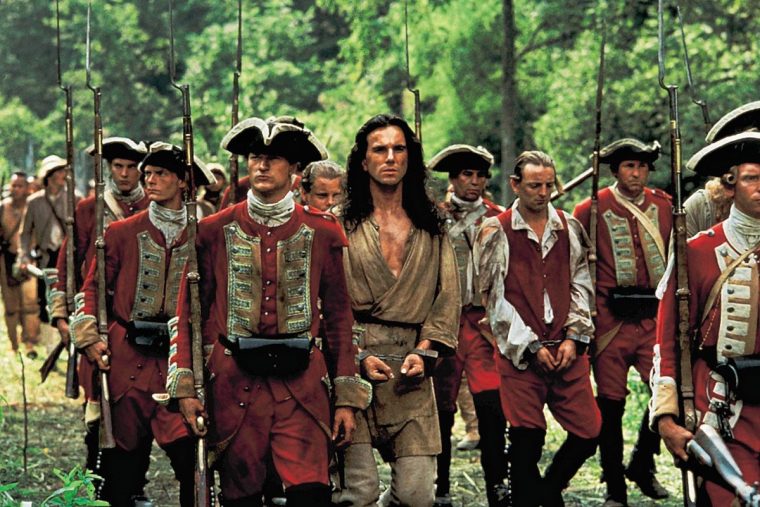
Had he wanted to, Day-Lewis could easily have become an action hero in the mode of Tom Cruise. It is, for instance, easy to imagine him going all-in and method-acting his way through a Mission Impossible film. As it is, the only glimpse we have had of Lewis as a hunky action dude was as hatchet-wielding Nathaniel Poe in Michael Mann’s lushly straightforward adaptation of James Fenimore Cooper’s 18th-century romp, The Last of the Mohicans. Day-Lewis’s preparation for the part immediately became part of film folklore: he lived in the wild, built a kayak and learned how to strip and load a rifle. However over the top, the work paid off – the iconic scene where Poe, framed by a waterfall, tells Madeleine Stowe’s Cora Munro that he “will find her” could so easily have tipped into kitsch. But Lewis never even approaches the cliff edge. Instead, he makes you believe in destiny, honour, and hairy men in the woods fighting for the women they love.
3. My Left Foot (1989)
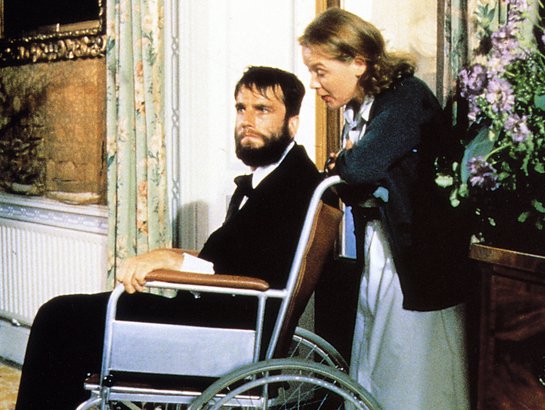
Even at the time, there was controversy around the decision to cast Day-Lewis as wheelchair-bound Irish writer Christy Browne. While preparing for the part by talking to people with cerebral palsy in Dublin, he was told flat out that he shouldn’t have taken on the job. But take it on he did, and few could quibble with the astonishing tribute he paid to Browne, who was born with cerebral palsy and – the clue is in the title – could only write with his left foot. Just like in In the Name of the Father – likewise directed by Jim Sheridan – Day-Lewis went beyond a conventional performance. His turn as Browne was, above all, a homage to Browne’s drive and courage. When he won the Oscar, there was a very real sense that the victory was as much Browne’s as Lewis’s. My Left Foot also marked the canonisation of Day-Lewis as the most methodical of method actors. While filming, he stayed in his wheelchair—and insisted that stagehands carry him about between scenes. Even this early on in his career, Day-Lewis was the ultimate all-or-nothing performer.
2. There Will Be Blood (2007)
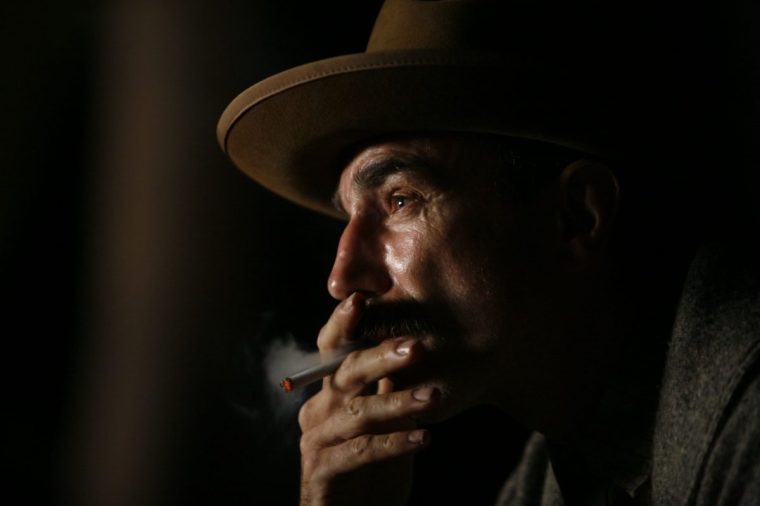
There are serious Daniel Day-Lewis parts and there are ridiculous ones. There Will Be Blood’s Daniel Plainview is very much in the second category, even if his starring role in the Paul Thomas Anderson period drama won the actor his second Oscar. It’s never quite clear if Day-Lewis understands the absurdity of Plainview: a ludicrous gilded age robber baron, with massive moustache, magnificent hat and penchant for milkshakes chugged with maximum aggression. Yet it is that absence of any winking or nudging on Day-Lewis’s part that gives the turn its molten power. As a character, Plainview makes sense only because he is unaware of how absurd a figure he cuts as he bestrides the early 20th century California oil boom – and it works because, at some level, Lewis is likewise not in on the joke.
1. Phantom Thread (2017)

On YouTube, there is a popular ASMR relaxation video that consists solely of a looped clip from Paul Thomas Anderson’s taut melodrama Phantom Thread, in which Day-Lewis’s suave fashion designer, Reynolds Woodcock, takes the measurements of his future muse and lover, Alma Elson (Vicky Krieps). There’s hardly any sound – just the ruffle of material and Day-Lewis’s voice, velvety and mesmerising. He brings the same quality to the rest of the film – his character’s hypnotic stillness punctuated by occasional outbursts that reveal the turmoil beneath his placid exterior. The soft-spoken patriarch whose demons cannot quite be contained is a new fit for Day-Lewis. It is a suit he wears with ease in one of his less showy turns – but one that, with repeated viewings, reveals its own enthralling power.
Anemone is in cinemas now
